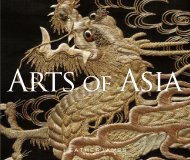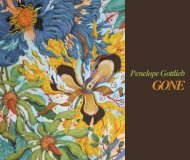Spheres of AbEx - Heather James Fine Art
Spheres of AbEx - Heather James Fine Art
Spheres of AbEx - Heather James Fine Art
You also want an ePaper? Increase the reach of your titles
YUMPU automatically turns print PDFs into web optimized ePapers that Google loves.
HANS HOFMANN (1880-1966) is one <strong>of</strong> the most important figures<strong>of</strong> post-war American art. German born, he played a pivotal role in thedevelopment <strong>of</strong> Abstract Expressionism as an influential teacher <strong>of</strong>generations <strong>of</strong> artists in both Germany and America. In 1930 H<strong>of</strong>mannwent to teach at the University <strong>of</strong> Berkeley and in 1932 settled in NewYork where he taught art at the <strong>Art</strong> Students League and later againopened his own schools in Manhattan and Provincetown, Mass. For eageryoung American artists constrained by the aftermath <strong>of</strong> WWII and theDepression, contact with H<strong>of</strong>mann served as an invaluable connectionwith European Modernism. Noted art historian Clement Greenberg calledH<strong>of</strong>mann “in all probability the most important art teacher <strong>of</strong> our time.”His school remained a vital presence in the New York art world until 1958when the then seventy-eight year old H<strong>of</strong>mann decided to devote himselffull-time to painting. Combining Cubist structure and intense Fauvistcolor, H<strong>of</strong>mann created a highly personal visual language, continuouslyexploring pictorial structures, spatial illusion and chromatic relationshipsand creating volume through contrasts <strong>of</strong> color, shape and surface. Also aprominent writer on modern art, his push/pull theory is a culmination <strong>of</strong> many<strong>of</strong> his ideas and describes the plasticity <strong>of</strong> three-dimensionality translatedinto two-dimensionality. Due to a dazzling burst <strong>of</strong> creative energy whenhe was close to 70 years old, his most highly recognizable canvases arefrom the late 1950s and 1960s, paintings <strong>of</strong> stacked, overlapping andfloating rectangles and clear, saturated hues that assured his reputationand cemented him as a key member <strong>of</strong> the Abstract Expressionists.










